It’s been said that danger lurks around every corner. This is never more true than on the road. Crashes can, and do, occur on any street, regardless of location, condition and speed limit. But not all roads are created equal. While some may have danger around the corner, others have danger all around. All this danger can make for some hair-raising drives.
Roads can be scary for a variety of reasons. Some travel through hazardous terrain, while others are so flat and straight they become breeding grounds for speeding and unsafe driving. You’ll find dangerous roads from coast to coast, in crowded metropolises and areas so remote they’re difficult to access.
Here’s a look at some of the scariest, nerve-racking roads in America.
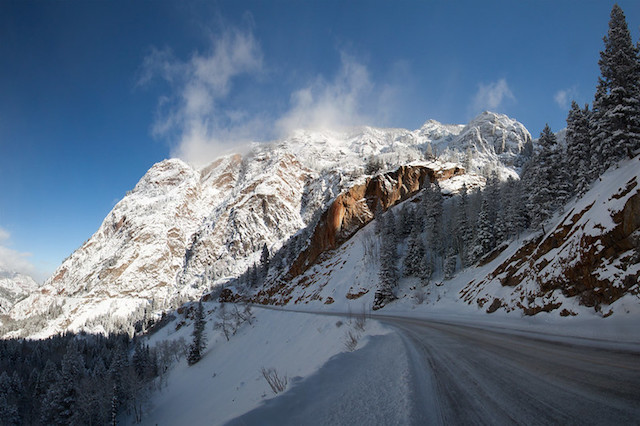
Million Dollar Highway, Colorado
Officially known as U.S. Route 550, local legend says Colorado’s Million Dollar Highway got its moniker after an early traveler proclaimed she’d have to be paid $1 million to drive it again.
Winding through Red Mountain Pass in the San Juan Mountains, the roadway is undoubtedly one of the most breathtaking in the country. But those stunning views don’t come easily. You’ll encounter steep cliffs and hairpin turns as you climb the highway more than 11,000 feet above sea level. If that’s not unnerving enough, the road, carved into the side of the mountains, has no guardrails. Throw in some harsh Colorado weather and the occasional rock slide and you have one of the most dangerous roads in the country, according to a list compiled by USA Today.
U.S. Route 1, Florida
Florida doesn’t have Colorado’s mountains, but it does have another lurking danger: It’s one of roughly half the country’s states without a full ban on using a handheld cellphone while driving. That might help explain why a recent study found that 17 of the 100 deadliest roads in America were in the Sunshine State, the most in the country. The research, which looked at death totals from 2015 to 2019, found Florida’s section of U.S. 1 to be the country’s second deadliest road. In total, 87 people died there over that time.
Most of the route up the eastern coast is straight as an arrow, inviting drivers to reach dangerous speeds. The southern end, known as the Overseas Highway, connects the Florida Keys to Miami. It consists of miles and miles of bridge driving, something many people find distracting or unsettling.

Lake Pontchartrain Causeway, Louisiana
At nearly 24 miles long, the Lake Pontchartrain Causeway holds the Guinness World Record for longest bridge over water. Depending on how you feel about driving for a half-hour suspended over a lake, the causeway can be a thrilling or nerve-racking experience. When you get toward the middle of the bridge, where dry land is completely out of view, it will likely veer toward the latter.
Being surrounded by water also leaves drivers open to the elements: The causeway can become enveloped in fog so thick that police have to usher drivers across the lake.
I-4, Florida
Interstate 4 between Tampa and Daytona Beach was once found to be the deadliest interstate in the country, recording 1.41 fatalities per mile. One explanation for the road’s high incident rate could be its route directly through Orlando, one of the country’s premier tourist destinations. “What’s the first thing they do when they get off the plane?” Glenn Victor of the Florida Safety Council asked Fox 35 Orlando. “They rent a car that they’re not familiar with and they’re on their GPS, so they’re looking at the phone and their GPS which, of course, is a distraction while they’re driving.”
I-45, Texas
Some roads are innately dangerous because of how they were designed or the terrain they traverse. Others are dangerous simply because of how many drivers use them – and the number of ensuing crashes they cause. The congested Galveston to Dallas section of I-45, which runs through downtown Dallas, was recently named the deadliest road in America by Budget Direct. Citing heavy traffic and driver complacency, the company found I-45 averages 56.5 fatal accidents for every 100 miles of roadway.
I-10, Arizona
Interstate 10 spans the width of the country, stretching from Jacksonville, Fla., to Santa Monica, Calif., but it’s the roughly 300-mile stretch through Arizona that has proven most foreboding. The highway’s long, straight stretches through the desert are hot spots of high speeds, aggressive driving, illegal passing and inattentive drivers. Nearly 500 fatalities were recorded on Arizona’s I-10 over a recent six-year period.
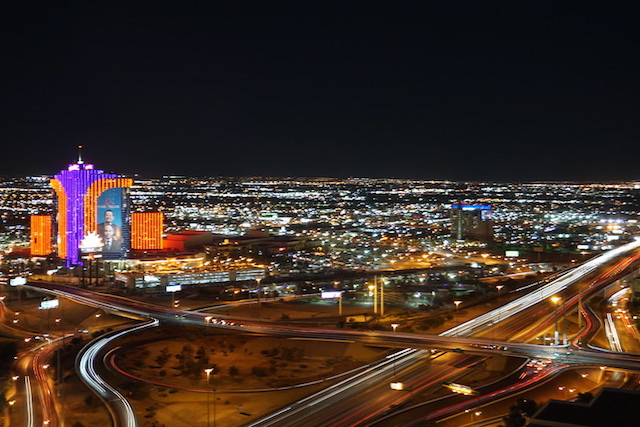
I-15, Nevada and California
The 181-mile stretch of Interstate 15 connecting Las Vegas and Los Angeles is a straight, well-maintained roadway, conducive to safe traveling. And yet, it routinely ranks as one of the country’s most dangerous roads. One study looked at data over a 15-year span and found it to be the deadliest roadway in the country.
The problem isn’t the road – it’s the drivers. Motorists often speed on I-15 while traveling through the openness of the Mojave Desert. The fact they are likely coming or going from the party city of Las Vegas doesn’t help either. The same study found that nearly a quarter of the crashes occurring on that section of the I-15 involved a drunk driver.
I-285, Georgia
Atlanta’s I-285 is known as “The Perimeter” because it circles the city in a 64-mile loop. It connects all the area’s interstates and highways and, in doing so, welcomes an onslaught of traffic, including tractor-trailers. The combination of congestion, sharp turns, interchanges and large trucks has turned I-285 into a lethal stretch of pavement. In 2015, Vox calculated the road’s fatality rate at 3.5 per every 10 miles, which, at the time, made it the country’s deadliest interstate.
U.S. Route 17, South Carolina
Winding through forests, marshlands and oceanside towns, South Carolina’s Highway 17 is one of the most scenic drives in the southeast. But looks can be deceiving. The road is filled with an endless number of sharp, blind turns and narrow lanes. The area is also home as well as an abundance of wildlife, creating another potential driving hazard.
All told, U.S. 17 in South Carolina is one picturesque – but perilous – drive. In fact, one study named it the country’s most dangerous highway for summertime travel.
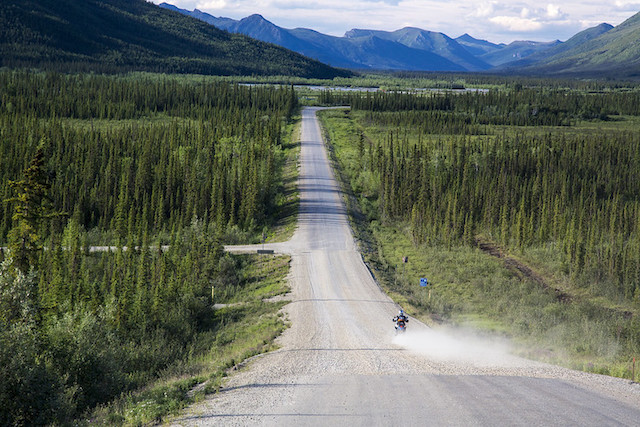
Dalton Highway, Alaska
The James Dalton Highway stretches 414 miles through the Alaskan wilderness from Fairbanks to Deadhorse, located on the shores of the Arctic Ocean. The dirt-and-gravel roadway was constructed in 1974 to help facilitate the oil industry and to this day is mostly used to transport oil.
The Dalton traverses through some of Alaska’s most treacherous terrain, including forests, tundras, steep grades and the Yukon River. Traveling along the road is so dramatic, in fact, it’s the focus of the hit television show “Ice Road Truckers.” But what makes the Dalton Highway particularly dangerous is its remoteness. There are only three towns along the entire route, which includes a 240-mile stretch without a single gas station or rest stop. Should something happen to you along the way, it may take a long time to get help.
Highway 2, Montana
Montana is the country’s fourth-largest state by size, but the eighth-smallest in population. This means you can drive for a quite some time before coming across anyone else. Open roads can lead to pleasant drives, but they can also be quite dangerous. Nowhere is this more true than on Montana’s Highway 2, which stretches east-west across the northern end of the state.
The roadway maintains a 70 mph speed limit, even as it winds through some mountainous regions. And while the scenic nature may be eye-popping, it also means you’re far away from the nearest help. In 2021, the median EMS call in Montana took a total of nearly 45 minutes. That number only gets higher when first responders have to travel to and from remote Highway 2.
Road to Hana, Hawaii
Driving around the islands of Hawaii seems like a journey through paradise, but be careful what you wish for, especially if you’re traveling along Maui’s Road to Hana.
The 52-mile road connects Kahului to Hana along the island’s rugged eastern shoreline. And though the highway offers picturesque views of mountaintops, lush greenery and crashing waves, the Road to Hana is far from a luxurious drive. Along the way, you’ll encounter a whopping 620 turns and 59 narrow bridges. The route requires such caution it takes motorists anywhere from two to four hours to complete. That’s why the Hawaii Tourism Authority recommends traveling with a permitted tour company instead.
Have you driven on any of these dangerous roads? Tell us in the comments below.
146 Thoughts on “Are These The Most Nerve-Racking Roads in America?”
Leave A Comment
Comments are subject to moderation and may or may not be published at the editor’s discretion. Only comments that are relevant to the article and add value to the Your AAA community will be considered. Comments may be edited for clarity and length.




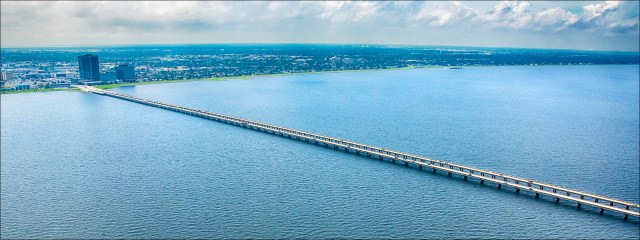


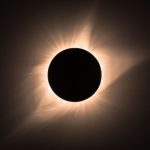








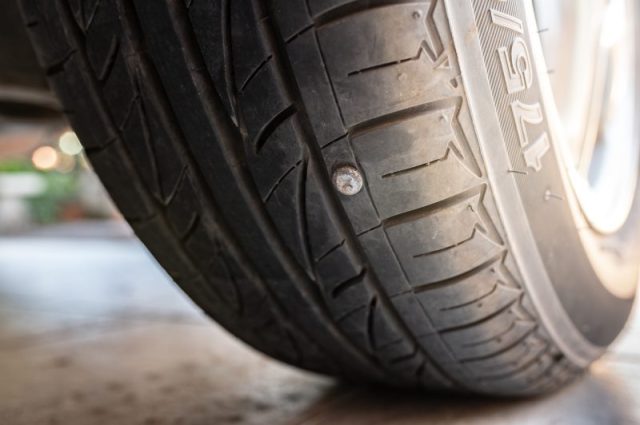


Lake Ponchartrain Causeway, LOVE IT. Drive it roundtrip from New Orleans to Natchez, MS when I travel south. It never disappoints. I actually find driving over the water calming. Even in rain or when the wind induces waves.
In Greece at the end of a long hot dry season I was driving down a well blacktopped curvy mountain road with a serious drop on the upside. Nice wide lanes. Very little traffic. I knew I was driving slow enough that I could take the curves with no or a light touch of the brake. For the first in months of no rain, it started raining. I was happy with the thought that the rain would be cooling things off, blissfully unaware of the reaction of the rain with the blistering hot blacktop. Suddenly a curve requiring of me a bit more breaking than usual. But, alas, just enough braking to cause my car to uncontrollably slide over the “black ice” slippery road to ineluctably go over the the edge. But my luck (or “eluct” ) held—ponderously coming up the outter lane was a gargantuan black Mercedes that crashed into my car, stopping it from a perilous fall (there were no guardrails, albeit there was sufficient space between the edge of the blacktop & the perilous fall). This is off topic, but maybe serves to point out how a good road can be turned lethal in unexpected ways by a seemingly innocent weather event.
Having driven in all 48 contiguous states, I have found there are dangerous roads (including these) in every state. As several have commented on here, many times the road itself is not the danger, the danger is the drivers you encounter on those roads. Whether it be drunk divers, seniors with difficulty driving at night, or distracted drivers looking at scenic views or their cell phones, etc., if you stay alert and watch out for other drivers, you are much less likely to become a statistic. Also, to avoid becoming one of those drivers yourself, pull off the road to enjoy those incredible views you see on some roads. Along with the Lake Pontchartrain Causeway, the most unnerving site to me are the emergency truck pull outs found on many roads in the mountainous areas of the West. Built as uphill emergency pull outs with a base of soft soil or sand, they are meant for truckers who might lose their brakes on the steep downhills. That thought always has me looking in my rear view mirrors whenever I am in mountain country.’
I vote for the Pennsylvania Turnpike, especially the sections near Breezewood, I80 is a better alternative, NYC to PGH. Rain or sleet/snow, two lanes twisting about and tractor/trailers occupying both lanes. Enough already! And the Cross Bronx, if you can get above a couple of miles per hour, your cruisin’! Slow speeds on the CBE make for less deadly accidents.
Yeah, the PA Turnpike is nasty–far too narrow, and people drive way faster than they should. But I-80 is a deathtrap, especially during the winter. Every year there is at least one multi-fatality, multi-vehicle pile up, usually due to idiots not knowing to slow down during foggy or whiteout conditions. I take Rt. 22 when traveling from Harrisburg through Altoona and on to Pittsburgh, and vice versa.
The Causeway over Lake Pontchartrain might be the scariest I have ever taken, and I have driven in Africa, Central America, and other challenging places. There are no shoulders to pull over onto, and you look straight down at the water. I kept thinking “Alligators are down there waiting for me if I do anything wrong”
We have driven several of these roads over a period of 35 years. The roads are not the danger but the incompetence of the drivers are. Every road has a caution level for different reasons that must be respected. Only roads that are not properly maintained should be considered dangerous. Better drivers equals better safety !
Let’s admit the real reason there are so many dangerous roads in FLA; it’s God’s waiting room. The huge number of seniors living there are the real reason. Not all are bad drivers and most weren’t always bad drivers but many have trouble admitting when it’s time to hang up the keys.
My mother lived in North Port on the west coast and it was common knowledge that if you drove on Route 41 at night you were probably going to experience an elderly driving coming right at you in your lane. 41 was two lanes north and two south divided by a grass median strip. Elderly drivers got confused pulled out of side streets in the dark and instead of going far enough to cross the median to go north or south they just turned onto the road….going south in the northbound lane or vice versa. It happened to me while visiting my mom numerous times. Luckily I was watching for it and avoided a collision. Some of my mom’s friends weren’t so lucky.
There are lots of mountain roads here in Idaho without guardrails, so that doesn’t bother me. I can always spot drivers from the flatlands, they hug the centerline and drive at a crawl on mountain roads.
I’ve driven all over the country, including a road trip to the Florida Keys from Washington state and the PCH from end to end.
The worst drivers are on Long Island, hands down. My parents live in Suffolk County and the drivers are nuts.
O yes! Pacific Coast Highway 1 while we were driving in the outer lane above the cliffs, another driver on the inner lane, removed his hands from the steering wheel to video the scenery! Duh! My husband is from Italy. We had to drive the narrow roads in the mountains above the coastline above the Riviera to get to and from his brother’s home. Many times, while we were in the outer lane, as we came down and around the numerous precarious curves, we would be met by the local bus coming up in the opposite direction. We would have to quickly make room for it, but only God know how! Our nephew said that many a car winds up on top of the olive trees in the groves below.
I’d like to see another article on the 10 deadliest American highways to drive at night, specifically because of the headlights of oncoming traffic. And please address the brighter bulbs in headlights these days, and how they are affecting drivers. In the “old days”, I can’t recall as many people complaining about night vision driving as the do today, and I believe it’s due to these headlights. I think they should be banned!!!
Totally agree about those crazy headlights- I can’t understand how they are even allowed. Great for the driver of that car, deadly for everone else!
I-10 in AZ is dangerous not just because of high speeds, glaring sun, and mind-numbing monotony, but the dust storms come up suddenly causing zero visibility. I’ve driven from Miami to Key West with white knuckles in bad storms, with crazies passing cars on 2-lane sections where they can’t see what’s coming. A friend was killed in a head on collision on that section of HWY 1 so I’ll never drive it again. And I-95 around NYC should definitely make the list, for all the reasons given by other commenters and the hubcap it swallowed from my Toyota.
I-95 in the Bronx is probably the safest roadway in the world because we can only go 1 mile per hour on it!
Agreed! I think that 1 mph might be a little high on the Cross Bronx Distressway!
You are so right. 95 in Providence, Rhode Island, is getting just as bad. Somehow there are still tons of accidents, though.
The I-95 stretch you mentioned is a living nightmare. I avoid it at any cost. A speeding ticket would be a badge of honor (:0)
Seriously, stay away!!!!
My wife and I took vacations in Ireland and in Italy. The roads in both beautiful countries can give all those U.S. roads a run for their money. Narrow, hairpin turns, and bicyclists with a death wish sharing what little road there is with the speeding cars. Still — and this comment applies to all the mentioned roads — we all made it back alive, didn’t we.
Going through Atlanta you have 2 choices:
Go through downtown using the Downtown Connector where I75 and I85 converge. Don’t try to play it safe in the right lane as it will probably turn into an ‘exit only’ lane. The two interstates split; but take care – I 75 continues to the Western suburbs but you must take the split on the Right and I 85 continues to the Eastern suburbs but you take the split on the left.. You can take the ring road to avoid downtown but all trucks must take tgst road and it’s crowded and the drivers go fast…Good thing is, Atlanta drivers have good reflexes.
Yes, I experienced going through Atlanta trying to get to the Airport–the activity which brought me to Atlanta was on the opposite side of the Metropolitan Area from the Airport, and there had been a rainstorm just before I tried to return to the Airport. A number of underpasses were flooded! I have good directional instincts, and can navigate New York City and boroughs with ease, but this flummoxed me! This was before phones had GPS, so I called my husband and had him navigate me using Google Maps. I got to the Airport with 0 time to spare, but fortunately, due to the rainstorm, the departure was delayed, and I made the flight
Your research is interesting. I-45 from Galveston to Dallas made the list. The writer stated it goes through downtown Dallas but omitted that it also goes directly through downtown Houston (Harris Co.), the 4th largest city in the USA.
The original source article (Budget Direct’s list of most dangerous roads by country) declared it the most deadly in the USA:
“The most deadly road in the United States is Interstate 45, running north from Galveston to Dallas through Houston, Texas. This road has seen 56.5 fatal accidents for every 100 miles of roadway, thanks to a combination of busy, urban stretches and driver complacency. Harris County is currently suing the Texas transportation department to prevent a planned expansion of the deadly road.”
Glad you caught that point. Yes driving from Galveston, where I grew up, and having to drive thru Houston has always been a challenge. I-45 has been under constant construction FOREVER. As long as I can remember, I’m now 66, there has been construction there FOREVER… And you add that half of Houston go there on the summer weekends, I-45 is more then a nightmare. 2 years ago a very determined driver that I’m sure was more then high on something, had 3′ swords, yes swords like in Roman days, stuck out from his rims and spinning as he drove down the interstate. Needless to say his plan seemed to work he was clearing traffic for himself………..
The primary reason why Hwy 2 in Montana, and specifically the stretch through the Yak River valley is so dangerous isn’t speed, it’s deer and elk crossing the highway. There are many blind turns, as well as being buried in forests, leading to minimal light and virtually no sight distance. Montana’s highways department also has the charming practice of placing crosses made from T posts at the site of a traffic fatality. That section of Hwy 2 is littered with them
I took the road to Hana expecting a chilling adventure of a drive and while beautiful it was no more challenging than driving the Pacific Coast Highway 1 through N.California’s Sonoma, Mendocino, Humboldt and Del Norte counties. That’s a challenge! In addition to the constant blind curves, sheer drops, switch backs, and cyclists, you have elk, deer, sheep and cows on the road to worry about too. Occasionally pieces of the road fall into the ocean! That’s a thrill ride with with no rails!
The Bear Tooth Pass in Wyoming/Montana is not for the faint of heart! Located near Yellowstone between Red Lodge and Wyoming state line. Approx 11000 ft above sea level, hairpin turns, not open May thru Oct… I know it’s bad when my husband moans as he’s going around a turn, as I have misread the map not knowing how high up we are going, trying to reassure him just another 10 minutes! Lol! I cried when we got to the motel in Red lodge… terrifying, had snow and ice up there in August. Note to self: read elevation correctly on maps!
Rt. 81 in SW Virginia gets my vote. The truckers take over both lanes, speed, tailgate, and cause accidents galore. The locals know to avoid it if at all possible.
https://www.wdbj7.com/content/news/I-81–566354041.html
https://wset.com/news/local/vdot-i-81-is-one-of-the-most-dangerous-interstates-projects-will-begin-to-improve-safety
https://www.fishwickandassociates.com/blog/2021/05/using-interstate-81-increases-the-odds-of-truck-crash-involvement/
Yes and the trucks are always passing each other going about 80 mph while i am in the middle lane with white knuckles wishing trucks had a special lane for themselves.
I81 in SW VA also wins my vote. I live in Salem,VA and avoid it at all costs. Only two lanes of traffic for crazy numbers of trucks and cars and people tailgate and drive over the 70 mph speed limit. It’s a death trap with daily accidents and fatalities.
I-81 in SW Va is a death trap. Over 2,000 tractor trailer accidents every year. People speed and tailgate and there’s only 2 lanes for all that traffic!
I drove the Road to Hana 2 times back in the 70″s. An amazing drive, agreed not for fearful drivers. My friend and I choose to follow the unpaved section instead of turning around. Best choice of the trip. Some magnificent secenry and we got to meet a Hawaiian cattle rancher, who was friendly and proved to be a good ambassador for the state and provided a meal better than any restaurant. Would do it all again in a heartbeat.
We drove the road to Hana many years ago. It’s a wonderful and well worth experience. Don’t attempt it if you don’t like to drive. It does require concentration.
However we are New Yorker’s and drive the Saw Mill River Parkway, the Bronx River Parkway and the Jackie Robinson Parkway which are far more trecherous and dangerous.